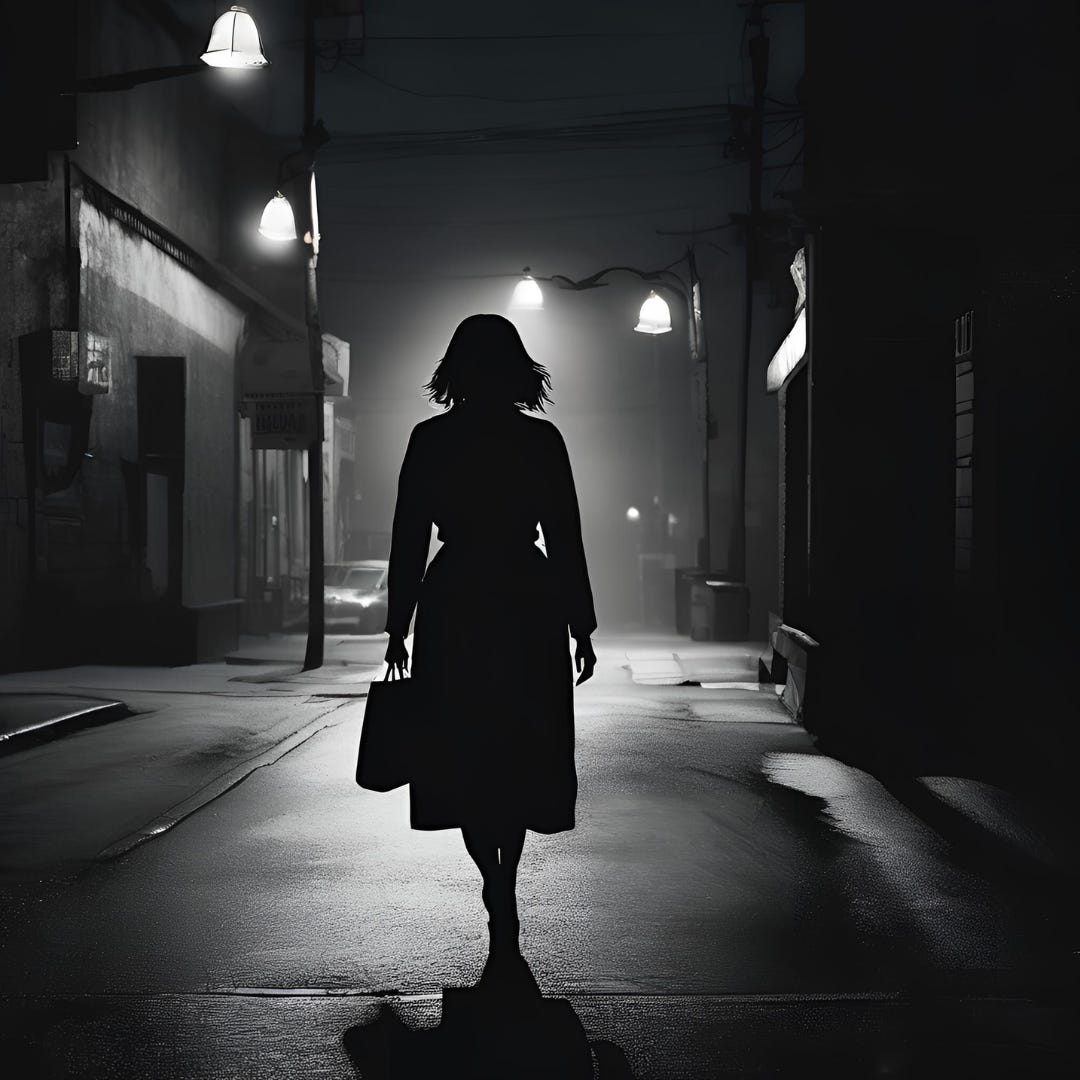Walking Home Alone – Are You Being Watched?
Issue 3: The Broken Padlock
🌙 A Quiet Walk… But Are You Alone?
You step out onto the pavement, the cool night air against your skin. The streets are quiet, just the distant noise of traffic, the occasional flicker of a streetlamp. You check your phone, maybe plug in your headphones. It’s just another walk home.
But something feels… off.
A figure lingers just out of reach, moving when you move, slowing when you slow. It’s probably nothing, right? Just another late-night pedestrian. But how can you be sure?
This is the unsettling reality of walking alone at night. Most of the time, you’re safe. But criminals are opportunists. They look for the moment when you’re distracted, when your guard is down. The question isn’t just “Is someone watching?”— it’s “Would you even notice if they were?”
🏃♂️ Your journey home starts now. Let’s make sure you get there safely.
🔎 Why You May Be Targeted
Criminals don’t choose their targets randomly. They watch, assess, and wait. Here’s what they’re looking for:
1️⃣ Distraction is their greatest weapon.
Scrolling your phone, adjusting your headphones, or digging through your bag? These small actions tell a criminal that you’re not paying attention.
The more distracted you are, the easier it is for someone to approach unnoticed.
2️⃣ Body language matters.
Walking with confidence, keeping your head up, and scanning your surroundings naturally (without excessive head movement or looking panicked) makes you a harder target.
Slouched posture, hesitant steps, or appearing lost, signals vulnerability and makes it easier for someone to follow unnoticed.
3️⃣ Routine makes you predictable.
Always take the same route home? Always walk alone after work? Criminals spot patterns.
Varying your route and timing makes it harder for anyone to anticipate where you’ll be.
🔒 What This Means in Practice:
✔ Increase perceived risk—to the criminal. Criminals don’t want to be seen. By making brief eye contact with people around you, you show that you’re aware of your surroundings. If someone is looking for an easy target, they’ll often move on.
✔ Reduce opportunity—for criminals to act. Stick to well-lit, busy streets where criminals have fewer chances to approach unnoticed. The harder it is to isolate you, the less appealing you become.
✔ Remove the reward—so criminals don’t bother. The latest iPhone in your hand or an expensive watch on display can make you a target. The less you have on show, the less attractive you are as a target.
Your awareness isn’t paranoia, it’s preparation.
🛡️ Practical Safety Tips – How to Stay in Control
Staying safe when walking alone isn’t about fear, it’s about preparation. Here’s how to make yourself a harder target without changing your routine too much:
1️⃣ Plan your route in advance.
Stick to well-lit, busy streets whenever possible.
Avoid shortcuts through parks, alleys, or quiet backstreets, especially at night.
2️⃣ Keep your awareness high, without looking panicked.
Walk with purpose, scanning your surroundings naturally.
Avoid excessive head-turning, but glance in reflections (shop windows, car mirrors) to check behind you.
3️⃣ Limit distractions.
Keep your phone in your pocket instead of scrolling while walking.
If you wear headphones, use only one earbud and keep the volume low so you can still hear what’s happening around you.
⚡ Remember: You Can Always Go to a Safe Place
If you feel at risk in a pub, club, or bar, approach staff and ask "Is Angela here?" This discreet phrase signals that you need help, and trained staff can assist you in leaving safely or calling for support.
In some towns and cities, Safe Places schemes allow anyone feeling vulnerable to seek help in participating shops, libraries, and public buildings. These locations display a Safe Place sticker in the window.
🔍 Find a Safe Place near you: Visit safeplaces.org.uk to see locations in your area.
👌 You don’t need to be paranoid, just prepared.
Disclaimer
While the advice provided in this newsletter can help reduce the risk of becoming a victim of crime, no security measure or strategy can eliminate the risk entirely. The goal is to reduce the risk to as low as reasonably practicable (ALARP), acknowledging that some level of risk will always remain due to the unpredictability of human behaviour and the methods used by criminals. According to criminological theories such as Situational Crime Prevention (Clarke, 1983), the most effective way to prevent crime is to alter the environment or circumstances that allow it to occur. However, even with the best precautions, risk can never be reduced to zero. The only way to completely remove the risk is to entirely eliminate the target in other words, remove the opportunity for crime to occur altogether. This reinforces the importance of layered security measures, vigilance, and ongoing risk assessment to effectively mitigate threats.


